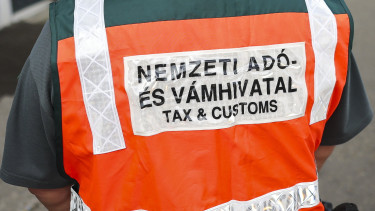Hungary 2025/26 respiratory virus season starts worse than in previous years
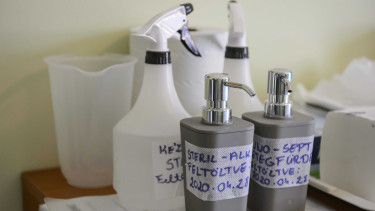
This respiratory season starts worse than in the previous years. The number of people seeking medical help with acute respiratory infection (ARI), including influenza-like illness (ILI) was higher on the 41st week than on the same week of the previous three years.
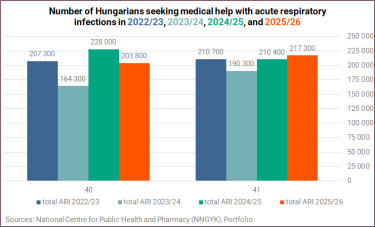
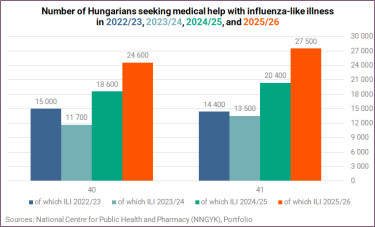
The share of ILI in ARI was 12.7%, also higher than in the previous three years.
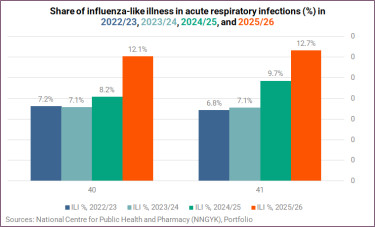
With regard to the number of ARI patients per 100,000 inhabitants, we're slightly worse off than in either of the previous three respiratory seasons.
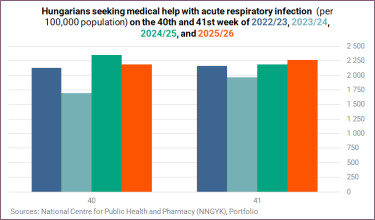
The number of patients with ILI per 100,000 people greatly exceeds the comparative figures of the previous three seasons.
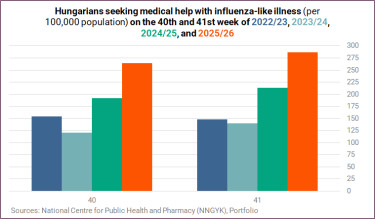
The Covid-19 positivity rate came in at 20.6% when considering all positive tests (32) of the samples submitted by sentinel GPs (155) and at 23.2% when calculating with all positive tests (43) in all of the samples (i.e. those submitted by sentinel hospitals and also traditional diagnostic samples, 185 in total).
The coronavirus positivity rate was higher in 2024/25 (29.4%) and in 2023/24 (25.9%).
Read our articles about the importance of vaccination below:
There were 99 people in hospital with severe acute respiratory infection (SARI), of whom 39 tested positive for COVID-19 (39.4%), which compares with 62.4% in 2024/25 and 65.1% in 2023/24, when hospitals admitted a lot more SARI patients on the 41st week, 165 and 169, respectively,
Eleven of the 99 patients needed intensive of subintensive care, a ratio of 11.1%, which compares with 19 in the same week of the previous two years (with ratios of 11.5% and 11.2%, respectively).
Around 70% of people admitted to hospital with a coronavirus infection (27 in total) were over 60 years old, and almost 47% of SARI patients were in this age group (46 in total). About a quarter of SARI patients were under two years old (24 in total).
The NNGYK also had some key data published since the official end of the previous respiratory season on the 20th week, which show a general increase in the number of hospitalsed SARI patients since the 35th week. We also find that SARS-CoV-2 is the main reason behind hospitalisations.
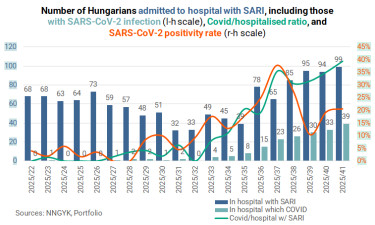
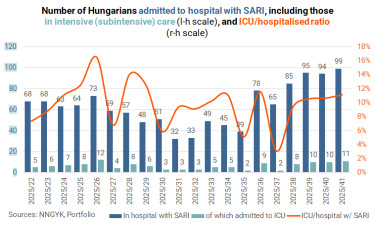
Almost 44% (about 92,000) of people seeking medical help with an acute respiratory infection (ARI) in week 41 were children aged up to 14. More than a quarter (57,000) were aged 15–34.
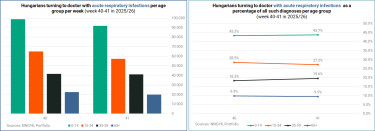
When it comes to ILI, the most affected age group was people aged 15–34, accounting for more than 7,500 (37.1%) of all patients with influenza-like illness. These numbers and ratios are only slightly higher than a year ago, while in 2023/24 half of people with ARI were aged 0-17 on the 41st week, while 'only' less than 35% were in the 15-34 age group when it comes to ILI.
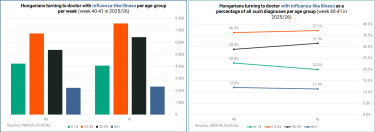
The patterns of the previous years suggest that the ratio of coronavirus infections in hospitalisations should start dropping just about now and get close to 0-10% by the 5th or 6th week of next year. In parallel with this, influenza infections behind hospitalisations should start to pick up before the end of the year or early 2026. And then there's the respiratory syncytial virus (RSV) to consider.
This is how the pathogens 'swapped places' as the main reason behind hospitalisations last year.
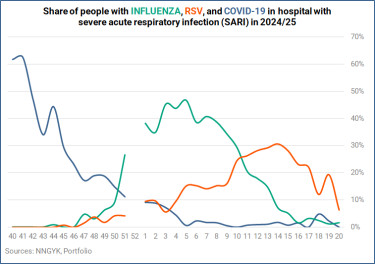
And this is how they changed over the past three respiratory seasons. (Note that
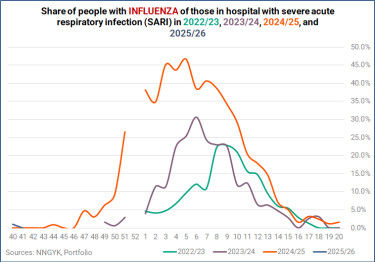
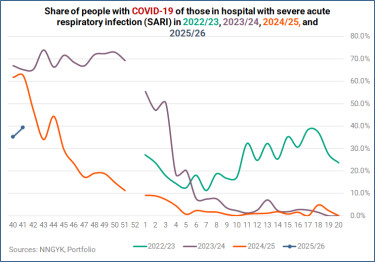
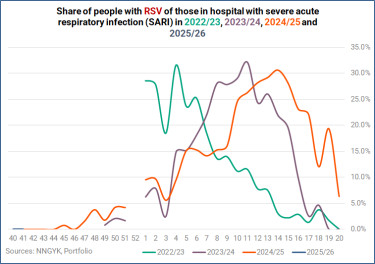
Cover photo: MTI Photo/Péter Komka



